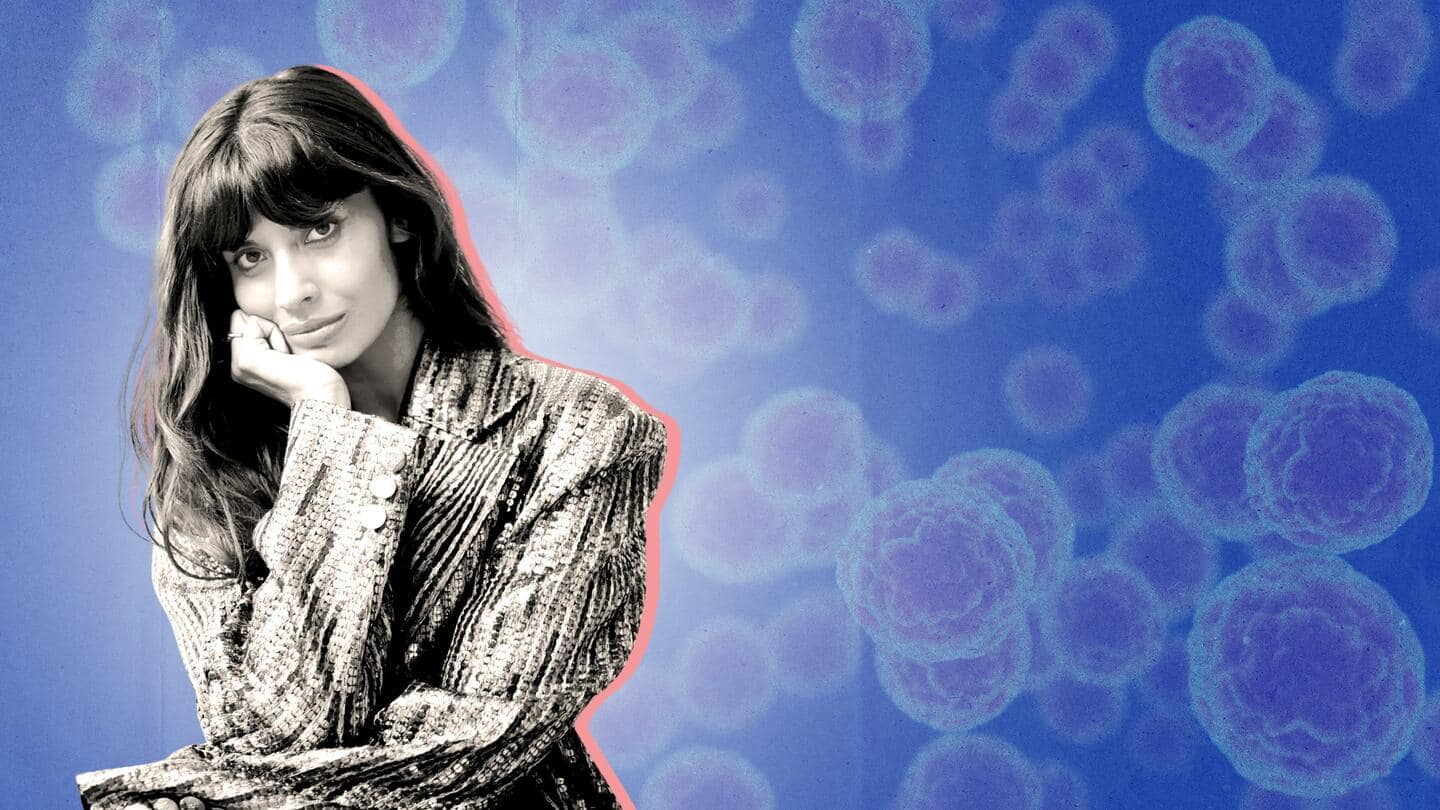
Jameela Jamil reveals she has rare tissue disorder: Details here
What's the story
British actor Jameela Jamil took to Instagram to reveal that she has a rare genetic condition called Ehlers-Danlos Syndrome (EDS). This condition has caused her joint hypermobility and stretchy skin. In the video, she can be seen explaining the condition while showing the elasticity of her cheeks and the hypermobility in her elbows. Read on to know more about this rare condition.
Actor's request
Please find out before it is too late: Jameela Jamil
The 36-year-old actor, hyperextending her arm, said, "As you can see, nothing bends the right way, everything bends the right and the wrong way." She further implored her viewers to, "Look it up, see if you have the symptoms if you are struggling with your joints if you are struggling with accidents all the time. Please find out before it is too late."
Definition
What is EDS?
According to the UK's National Health Service (NHS), EDS is a group of rare inherited conditions that affect connective tissues supporting the skin, bones, blood vessels, and many other organs and tissues. While some of the symptoms are mild, others can be disabling.
Types
Types of EDS
There are a total of 13 types of EDS namely hypermobile, classic, classic-like, cardiac-valvular, vascular, arthrochalasia, dermatosparaxis, kyphoscoliotic, brittle cornea, spondylodysplastic, musculocontractural, myopathic, and periodontal. Each type of EDS exhibits different symptoms and health outcomes. For example, vascular EDS affects the cardiovascular system, whereas dermatosparaxis EDS produces more skin-centric symptoms. Out of all the 13 types, hypermobile and classic are the most common.
Signs & symptoms
What are the symptoms of EDS?
Symptoms for EDS vary depending on the type. However, one common symptom is joint hypermobility, in which joints have a higher range of movement than usual. Another one is elastic skin, which happens due to the lack of collagen in the skin. People with EDS also have fragile skin, which means they are more prone to cuts, bruises, and wounds that may heal slowly.
Causes
What causes EDS?
EDS is a rare genetic condition affecting one in every 5,000 people worldwide. In most cases, people inherit the condition from their parents. In rare cases, people may develop EDS due to spontaneous mutations in genes involved in collagen function. The faults in certain genes that make connective tissue weaker cause EDS. These faulty genes may have been inherited from either or both parents.
Prevention
Preventive measures
Since EDS is a genetic condition you can't prevent it. However, you may be able to prevent further complications. There is no medical cure either. If you use sunscreen to protect the skin, and actively avoid lifting weights, using harsh soaps, and playing sports, you may help yourself with managing your condition. You can also use assistive devices to minimize pressure on your joints.
Treatment
Treatments involved
Since people with EDS have joints with weak connective tissues, the doctor may recommend exercises to strengthen the muscles and stabilize joints, and to wear supportive braces to prevent joint dislocation. Painkillers such as acetaminophen, ibuprofen, and naproxen sodium may help relieve joint pains. Surgery may also be recommended for damaged joints and ruptured areas in blood vessels and organs.